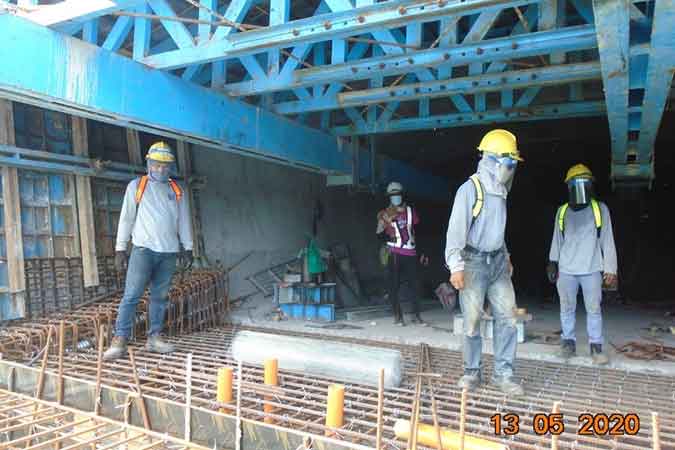
THE government’s flagship infrastructure project list — big-ticket priority works undertaken via the “Build, Build, Build” program — will be revised by year’s end to favor those more likely to make significant progress, based on projected construction timetables and funding availability, according to the National Economic and Development Authority (NEDA).
In a briefing Thursday, NEDA Undersecretary Jonathan L. Uy said the list of 104 infrastructure projects are under reviewed to check for their readiness for implementation. He added that the new list might be ready before the year ends.
“We are now recalibrating the 104 infrastructure flagship projects. I hope by the end of this year we will have finalized a list, it would appear that we are now (at) about 100 projects (with) some additional ones we proposed for this particular update,” according to Mr. Uy, who also heads NEDA’s investment programming group.
“The important point is work (and) procurement (are) continuing… the disbursements are a bit late, and the extension of the 2020 budget to 2021 will ensure that all of these expenditures may be ramped up,” he added.
The government has revamped the list several times after identifying an initial 75 in mid-2019. The government has been prioritizing so-called “shovel-ready” projects as its time in office runs out, and also as a means of injecting money more rapidly into the economy to help it recover.
The overall program is estimated to cost P4.13 trillion, funded via foreign loans or aid, public-private partnerships, and budget funds.
Currently, 26 of the 104 priority projects are in the approval stages and are being reassessed for whether they can be substantially started or completed within the administration’s term, NEDA Acting Secretary Karl Kendrick T. Chua said at the briefing.
“If they will be able to go through the approval and final preparation process in the next few weeks, then they will remain. If they will not be achieving those objectives, then they may be parked, but we are also considering a number of other projects,” Mr. Chua said.
“We are constantly reviewing the list and it is likely that our further review will include some of the major flood-control projects as addition because of our recent experience (with typhoons),” he added.
Details on the specific projects dropped or included in the updated list were not provided during the briefing.
Infrastructure spending hit P508.5 billion in the 10 months to October, down 18.4% year on year, according to the Department of Budget and Management (DBM). In October, infrastructure and other capital outlays fell 30.6% to P57.1 billion.
Mr. Chua attributed the lower spending to the year-earlier base, at a time when the government was implementing a catch-up spending plan in the second half.
He said construction works are also continuing to face delays due to the disruptions caused by the late-year typhoons, as well as the dearth of transport for construction workers.
The government’s economic team early this month increased its expenditure target for infrastructure by 5% to P825 billion in 2020 from the reduced target in July. Despite the increase, this is still 16.6% lower than the original P989-billion pre-pandemic spending goal.
Capital outlays in the 10 months, which include equity injected into state-owned firms and transfers to local governments for their infrastructure projects, were down 11.8% year on year to P663.2 billion. The tally accounts for 80% of the P825-billion target for the year.
The DBM remained optimistic that the government can hit its revised target this year to help the economy recover faster from the recession. — Beatrice M. Laforga
